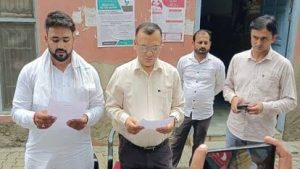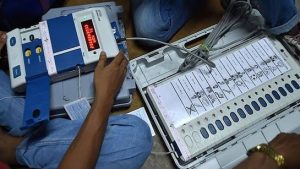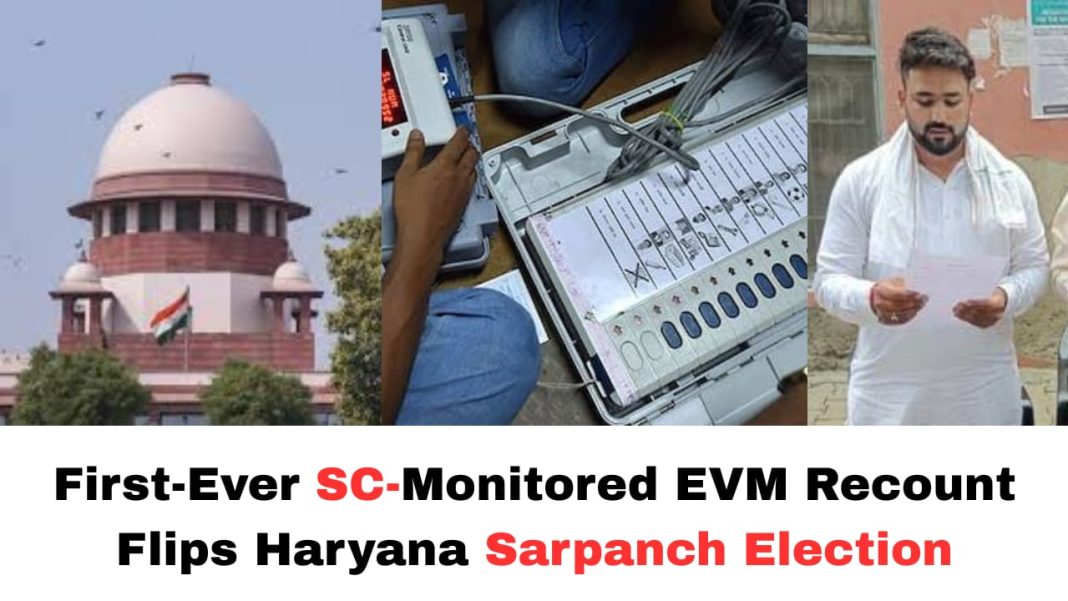Digital News Guru Haryana Desk:
A Turning Point in Electoral Justice: SC Recounts Panchayat Result, Reverses Outcome in Haryana
A long-brewing electoral dispute in Buana Lakhu village, Panipat district of Haryana—deemed relatively unremarkable—has become an extraordinary landmark in Indian democratic jurisprudence. In a first-of-its-kind intervention, the Supreme Court of India ordered a full recount of Electronic Voting Machine (EVM) votes and reversed the outcome of a 2022 sarpanch election. The ruling has reverberated across the nation, highlighting both the fallibility of election machinery and the resilience of judicial oversight.
The Disputed Election
On November 2, 2022, elections were held for the sarpanch post in Buana Lakhu. Initially, Kuldeep Singh was declared the winner and served as sarpanch for over 33 months. His opponent, Mohit Kumar, challenged the result, citing irregularities—specifically pointing to vote-count discrepancies at Booth 69.

An Election Tribunal partially sided with Kumar, calling for a recount at the disputed booth. However, the Punjab and Haryana High Court stayed that order, citing procedural limitations.
A Supreme Court First: EVM Recount on Court Premises
Mohit Kumar escalated the matter to the Supreme Court, which on July 31, 2025, issued a historic order. The bench—comprising Justices Surya Kant, Dipankar Datta, and N. Kotiswar Singh—directed that all EVMs and poll records, not just the disputed booth, be produced before the Court. A Registrar of the Supreme Court would oversee their recount within court premises, with the entire process videographed and both parties present throughout.
The recount took place on August 6, 2025, under these highly controlled conditions—ensuring absolute transparency and accountability.
Reversal of the Verdict
The Registrar submitted a report after the counting—revealing that out of 3,767 votes cast, Mohit Kumar had secured 1,051, while Kuldeep Singh tallied 1,000. The margin of 51 votes marked a complete reversal of the original result.
On August 11, the Supreme Court accepted this report as authentic, noting the videographic documentation and signatures of party representatives. The bench ordered the Deputy Commissioner-cum-Election Officer of Panipat to issue a notification within two days, formally declaring Mohit Kumar as the elected sarpanch. Kumar was also instructed to assume office immediately.
A Measured Judgment
Though the Court reversed the election result, it prudently allowed both parties to raise any pending issues before the Election Tribunal. Crucially, it emphasized that the Registrar’s recount report would serve as the final and conclusive record of the vote tally.

Reaction from the Ground
Mohit Kumar, now the confirmed sarpanch, described the victory as hard-fought but long overdue: “Justice was delayed, but it was served well. The entire village is happy.” He underscored that over three years, development work had stalled; promising to fast-track projects, including a sports stadium and a library, especially given the village’s legacy of producing athletes such as Olympian Navdeep.
Legacy of the Verdict
This ruling stands as a watershed in Indian electoral processes. It marks the first instance where a top court directly supervised the physical recount of EVMs—within its own premises and under transparent conditions. The verdict underscores the importance of procedural integrity, democratic fairness, and the judiciary’s role as a guarantor of electoral credibility.
Justice Surya Kant’s remarks were particularly weighty: he noted that errors at the booth level, whether clerical mistakes or otherwise, demand remedy via recount—not dismissal of the grievance.
Broader Implications
At the grassroots, this case reaffirms that the democratic process works—not just at the ballot box, but in the courtroom too. It signals that administrative accountability and judicial oversight can right wrongs—even in the most local of elections. For the judiciary, it sets new precedent, empowering lower courts and tribunals to demand greater oversight.
For the Election Commission and administrative bodies, this moment may invoke reevaluations of counting protocols and transparency measures. From a political standpoint, the ruling injects fresh urgency into the debate over EVM auditability, record-keeping, and process fidelity.
Lastly, for India’s citizens, especially in rural India, the ruling shines as a beacon: democratic systems—while not infallible—can be corrected through perseverance and legal recourse.

Summary
| Topic | Details |
| Election | Nov 2, 2022, Buana Lakhu sarpanch poll—Kuldeep Singh initially declared winner |
| Dispute | Mohit Kumar contested, citing counting error at Booth 69 |
| Legal Journey | Tribunal → High Court (stay) → SC intervention |
| SC Intervention | Ordered full recount in court on Aug 6, 2025 |
| Outcome | Mohit Kumar wins by 51 votes—courtmandated notification issued |
| Significance | First SC-supervised EVM recount—sets new transparency precedent |
| Next Steps | Development projects planned; pending tribunal matters still allowed |
In overturning a village election after more than two years of legal wrangling, the Supreme Court’s bold move has sent a definitive message: in India’s democracy, every vote counts—and the courts will ensure they are counted right.
You May Also Read: Operation Sindoor Heroes: 9 IAF Vir Chakras & 16 BSF Awards








